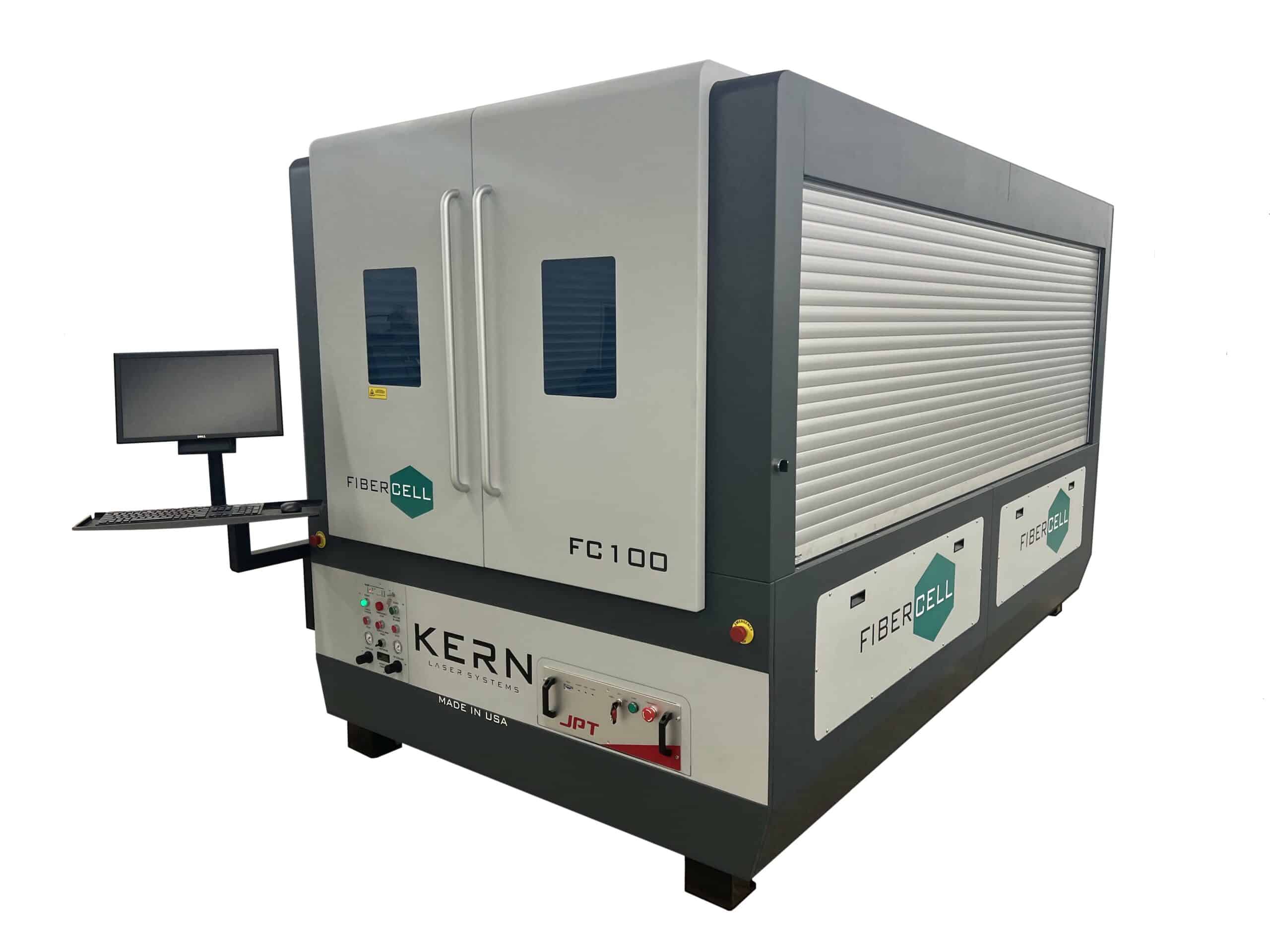In CO2 laser systems, there are two common types of power supply that can be used to excite the gas molecules in the laser module: direct current (DC) and radiofrequency (RF). In this article, we’ll take a look at the differences between these two power supply types.
Continue readingKCAM: Our Proprietary Laser Software and the Difference it Makes
There are three types of cores commonly available in the current CO2 laser market: metal, glass, and ceramic. At Kern, all of our laser systems have metal-sealed cores, which we consider to be the best, most proven design. Let’s compare some key aspects of these three common core types.
Continue readingHow I/O Impacts the Laser Manufacturing Industry
A current AI-related concept with relevance to manufacturing is I/O (input/output), which refers to the transfer of data between systems. I/O allows machines to communicate with each other during the manufacturing process.
Continue reading6 Industrial Laser Engraving FAQs, Answered
In this blog, we dispel some common myths and misconceptions about lasers, specifically about laser-cutting machines like those we manufacture and sell.
Continue readingWhy KERN Started a Laser Source Company
4 Red Flags On Sheet Metal Laser Cutters
Sheet metal cutting lasers are complex precision tools. When they are working at their best, they should be consistent: doing the same job to the same standard of quality, day-to-day. However, some components on a laser system are designed to be replaced, and failure to keep up regular maintenance can lead to a lower-quality product. […]
Continue readingWhat’s Inside a Kern Lasers OptiFlex?
If you are looking into acquiring a laser cutting machine for your business or other projects, you may be feeling overwhelmed at the many types of lasers, levels of specifications, and price points out there today. And you may wonder what kind of under-the-hood differences there are between, for example, a laser system manufactured overseas and a U.S.-built laser system like those we offer at Kern.
To illustrate, let’s take a look at our flagship model, the Kern OptiFlex.
What is the OptiFlex?
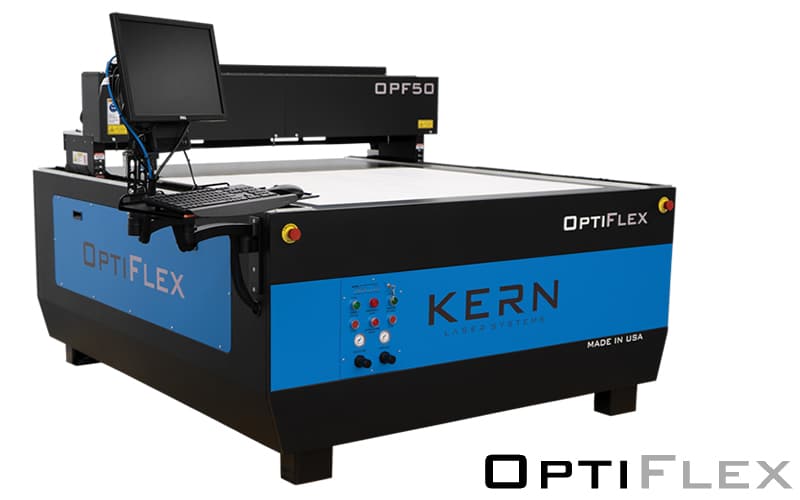 OptiFlex is a high-performance Class 4 CO2 laser system with an open-bed design that can handle a wide variety of industrial and commercial cutting or engraving tasks.
OptiFlex is a high-performance Class 4 CO2 laser system with an open-bed design that can handle a wide variety of industrial and commercial cutting or engraving tasks.
The defining characteristic of the OptiFlex is versatility. Like most of our machines, it is available with a range of laser wattages, from 100-watt to 650-watt. In addition, the OptiFlex can be ordered in five different footprints, with work areas from 52” x 50” to 86” x 144”. Other custom table sizes can also be requested. This makes OptiFlex appropriate for many workspace sizes and layouts.
Key Features and Specifications
The OptiFlex comes equipped with our HyperDual motion system, a dual rack and pinion system which uses Yaskawa Sigma7 servo motors at either side of the laser table to achieve dramatically increased cut acceleration rates and end vector speeds. The base of the machine is a one-piece steel weldment, a single assembly of welded components. The one-piece construction of the base means OptiFlex can arrive fully assembled, which cuts down on the time needed for installation and set-up.
OptiFlex can cut and engrave many types of material, including acrylic, mild and stainless steel, aluminum, wood, foam, leather, rubber, and more. Its open bed and our metal cutting option facilitate quick switches from processing one type of material to another. A component of the metal cutting package is our programmable air system. This allows the operator to quickly program for the correct assist gas to use when cutting and processing different types of material with the laser. With other lasers, users may be more inclined to minimize switching between materials, in order to avoid laser downtime during the switch.
The open-bed design also allows for the loading and unloading of materials from all sides of the OptiFlex.
The table of the OptiFlex features a built-in downdraft vacuum system to evacuate fume exhaust while the laser is in use. Its suction is powerful enough to serve the additional purpose of holding work material to the table. Exhaust suction capability is also built into the gantry above the table.
The OptiFlex is paired with a state-of-the-art laser source developed by our sister company, Kern Technologies. These lasers offer a cutting performance that beats out competitors’ products and sets a new benchmark in laser cutting technology. Ranging in wattage from 100-650, this contributes to the machine’s previously mentioned versatility.
Another major feature available on the OptiFlex is our K-Vision system, which gives the operator the use of a camera system and fiducials (fixed reference markers) for precision placement of pieces to be cut or engraved. The camera is nozzle-mounted, and it is able to compare markings on printed materials against markings in the original cutting file and adjust accordingly for factors like positioning or distortion. These very fine adjustments made to compensate for the minute real-world differences between the workpiece and the cutting file allow for highly precise cuts. We know these small differences in cut quality make a big difference to the user.
For more information on the OptiFlex, check out our brochure.
About Kern Laser Systems Machines
In addition to OptiFlex, Kern offers a wide variety of complete, turnkey laser systems to fit most types of cutting and engraving projects. All of our laser systems are manufactured in Minnesota and come with a two-day training course at our factory. All of our large-format laser systems come standard with smart, high-quality additions like closed-loop chiller units and a desktop computer and monitor with our KCAM software pre-installed.
5 Myths About Laser Cutting Machines
To the layperson, the word “laser” can bring to mind some exciting, but perhaps not altogether comforting images out of popular culture: lightsabers and other sci-fi weapons from Star Wars, lasers used for security or intimidation in spy thrillers, laser-guided missiles, and submarines. And of course, lasers bring a more modest set of real risk factors associated with their improper use or malfunction—eye injuries, burns, and the like.
With this in mind, we’ll take some time in this article to dispel some common myths and misconceptions about lasers, specifically about laser-cutting machines like those we manufacture and sell.
Myth #1: Fiber lasers are better than CO2 lasers
Many people have the idea that a fiber laser is inherently better than a CO2 laser because fiber lasers are a newer technology, and they tend to be rated at higher wattages than CO2 lasers. However, the truth is more complex.
Fiber lasers are excellent for cutting through sheet metal, which is the purpose for which they are primarily marketed. For processing organic materials like acrylic, wood, or foam, CO2 lasers are the better option. We continue to sell more CO2 lasers than fiber lasers because of their flexibility for applications like these.
The high wattage ratings of fiber lasers can also mislead consumers into thinking they need a fiber laser for their application. This blog from Southern Fabricating notes that power efficiency is actually a better indicator of a laser’s appropriateness for a given purpose. This measure describes the amount of laser wattage focused in a small area. Lower-wattage lasers tend to be able to focus more of their power output into a smaller area, making for a faster cut in many cases.
You need to select the right laser for the job you want to do and the material you want to work with, and for many applications, a CO2 laser will be a better option than a fiber laser.
Myth #2: Laser cutting machines can cut anything
Although many people might think a machine that can slice through sheets of stainless steel can cut through pretty much anything, this is not the case.
 There are materials that will cut very nicely and are great candidates.Then there are materials that last will cut but there are quality reasons (polycarbonate) or safety reasons (PVC, which emits harmful fumes when cut with a laser) not to cut it. However, we do have some applications where we cut very thin polycarbonate nicely. So sometimes you are just limited on the thickness you can cut. Last, there are material that just don’t cut nicely because they are too hard or will crack, like stone or glass. As noted in Myth #1, different types of lasers are better suited for cutting different materials.
There are materials that will cut very nicely and are great candidates.Then there are materials that last will cut but there are quality reasons (polycarbonate) or safety reasons (PVC, which emits harmful fumes when cut with a laser) not to cut it. However, we do have some applications where we cut very thin polycarbonate nicely. So sometimes you are just limited on the thickness you can cut. Last, there are material that just don’t cut nicely because they are too hard or will crack, like stone or glass. As noted in Myth #1, different types of lasers are better suited for cutting different materials.
Laser cutting machines are for precision, contact-free cutting and engraving applications. Each laser has limits as to the thickness of the material it can cut. Our 650-watt CO2 lasers can cut a quarter-inch of mild steel and .09” of stainless steel, for example, while our 3 kW fiber laser can cut .375” of mild steel and .188” of stainless steel.
Myth #3: Laser cutting machines are dangerous
Consumers new to lasers often have concerns about the possibility of injury or of laser-induced fires. But, as noted in the CAMM Metals article cited above, laser cutting produces a relatively small, controlled amount of heat, very unlikely to spark a fire. Laser cutters do not char the edges of most cut materials (wood being a slight exception), and for some materials, they naturally seal the cut edges.
Laser-cutting machines also tend to be designed to minimize potential issues. That is the case with our designs: All of our laser systems are equipped with thoughtfully integrated and appropriate safety features. The FiberCELL and LaserCELL systems, which are two of our most powerful products, geared toward cutting sheet metal, both come built into Class 2 safety enclosures, allowing them to be installed safely in relatively high-traffic areas.
But open bed designs can be safe as well, as long as the user wears properly rated safety glasses. We don’t cut safety corners with any of our machines: All of our laser systems are CDRH laser machinery-compliant.
Of course, one of the most important safety elements for working with any professional machinery is the knowledge and experience of the user, and we sell some of that experience with each of our lasers, in the form of a standard two-day training program at our factory.
Myth #4: Laser cutters are all basically the same
Even before you consider our laser systems against the competition, a cursory glance at our product portfolio shows this to be a myth: We offer a variety of integrated laser systems with varying output powers, features, specifications, and configurations to suit many laser cutting and engraving applications. Most of our CO2 laser systems can be equipped with lasers of any of the following wattages: 100W, 150W, 200W, 300W, 500W, and 650W. Our FiberCELL fiber laser can be equipped with lasers between 1 kW and 3 kW.
Of course, we also think we stand out in comparison to our competitors. Our machines are built in the USA to rigorous quality standards and we work hard to eliminate confusion and make troubleshooting a breeze. With foreign-built laser products, this is not always the case, parts may not be clearly labeled, parts and build may be subject to looser tolerances, and if you run into a problem, even very well-meaning customer service might fail to solve a problem across a language barrier.
Myth #5: Laser cutting machines require a ton of maintenance time
False! Maintenance on our laser systems can be completed in as little as 10 minutes per week. The laser system manual will highlight a daily, weekly, and monthly schedule. Common maintenance procedures include replacing chiller fluids, greasing bearings, oiling rails, cleaning optics, and cleaning filters.
We also take pains to consider and create features for our systems that will aid in or eliminate regular maintenance. For example, the FiberCELL comes with a slat-cutting table in the bed of the system, as well as a CAD file for cutting replacement slats.
New Year, New Model: 52” x 100” FiberCELL and LaserCELL Models
We are happy to announce the release of new versions of our FiberCELL and LaserCELL laser systems with 52” x 100” laser tables. These larger format configurations will be available in addition to the existing 52” x 50” versions of each model.
52” x 100” is our most popular size for laser systems, including our entry-level EcoFlex and flagship Optiflex systems. This size allows for easy processing of materials in standard sheet sizes of 4’ x 8’ and 4’ x 10’. Coupling this cutting table format with our enclosed FiberCELL and LaserCELL systems makes for two incredibly versatile and efficient machines.
The new versions of the FiberCELL and LaserCELL will also boast a few new upgraded features to make the loading and unloading of material a breeze. The biggest change is the addition of automatic roll-up doors. The original enclosure doors were manually operated, while the new doors are twice as long, push-button operated, and powered by an electric motor. It is also possible to side-load sheets of material into these enclosures. This means a forklift or other material handling equipment can be positioned to the side of the machine and used to load material sheets for processing more efficiently than would be possible by hand.
The FiberCELL and LaserCELL are both Class 2 laser systems because they feature complete housing around the processing bed. The Laser Institute offers detailed information on laser safety classification. For Class 2 lasers, momentary viewing of the laser’s light (from outside the enclosure, in this case) is considered non-hazardous.
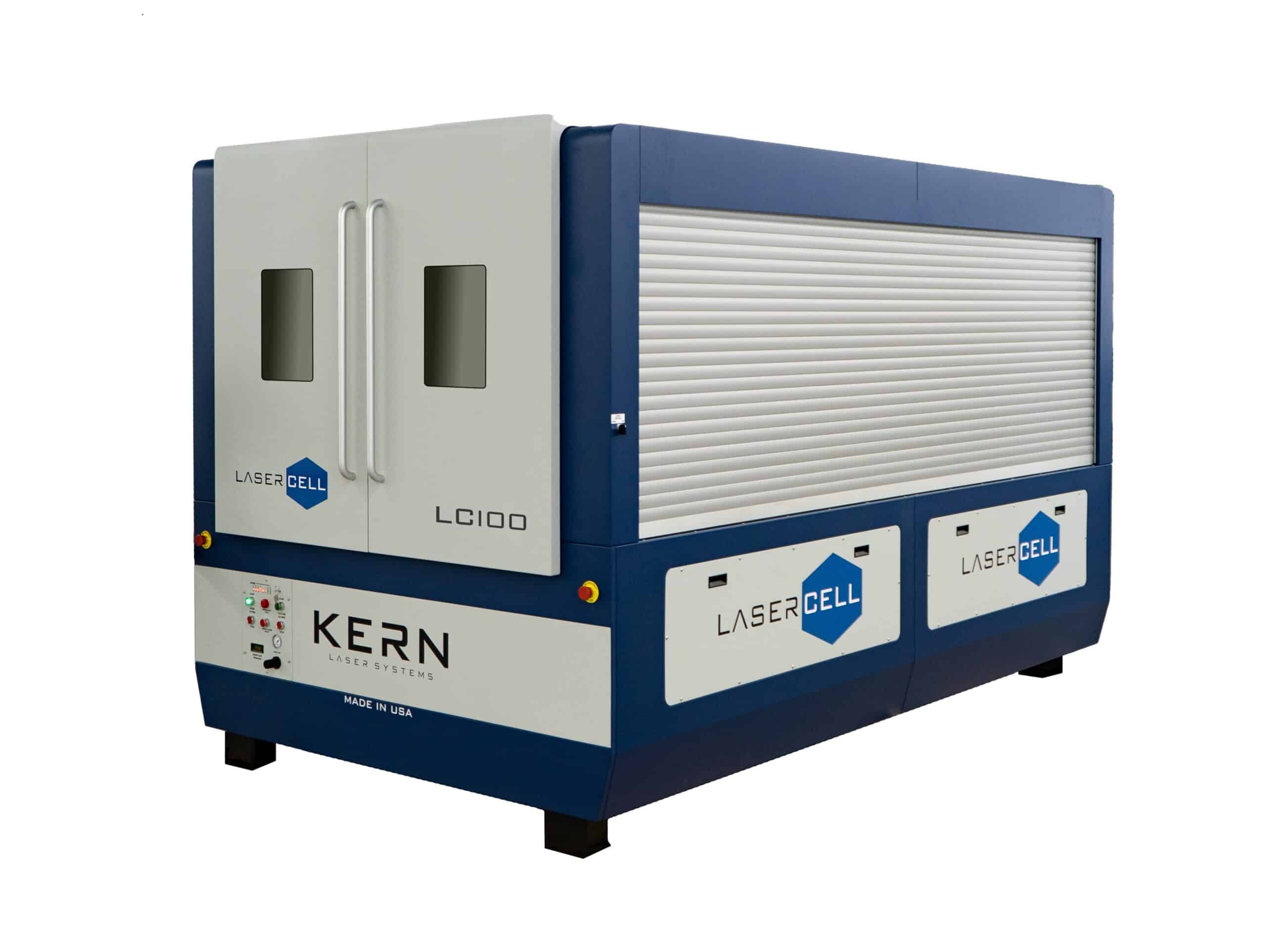 Thanks to their enclosures, the FiberCELL and LaserCELL can be installed in locations where Class 4 lasers cannot. For example, in a busy production area, there may be employees working with and without safety glasses. With an unenclosed laser system, especially one with output power like the FiberCELL or LaserCELL, everyone working in the production area would need to wear glasses, even if they are working on other machinery that does not require them to. A complete safety enclosure around the laser system eliminates this need.
Thanks to their enclosures, the FiberCELL and LaserCELL can be installed in locations where Class 4 lasers cannot. For example, in a busy production area, there may be employees working with and without safety glasses. With an unenclosed laser system, especially one with output power like the FiberCELL or LaserCELL, everyone working in the production area would need to wear glasses, even if they are working on other machinery that does not require them to. A complete safety enclosure around the laser system eliminates this need.
Safety enclosures also offer a level of environmental control desirable in business and university settings where lasers are commonly used. The enclosure can keep the smoke or dust generated by some laser applications from spreading to the rest of the work area, which keeps any other sensitive machinery nearby safe. This means more equipment can be installed in smaller working areas without worry. The enclosure contains and eliminates variables.
About the FiberCELL
The FiberCELL is a sheet metal fabricating fiber laser cutting machine built into a Class 2 safety enclosure. It can be used to cut a wide variety of metals, including mild steel, stainless steel, aluminum, anodized aluminum, brass, and copper. The FiberCELL houses a Ytterbium fiber laser with available wattages of 1 kW, 2 kW, or 3 kW. The FiberCELL also includes a slat cutting table in the bed of the system (and a CAD file for cutting replacement slats), sliding front and rear access doors, and programmable air assist for oxygen, nitrogen, and clean dry air supplies.
About the LaserCELL
Like the FiberCELL system, the LaserCELL is an integrated, turnkey laser system built into a Class 2 safety enclosure. But where FiberCELL units, true to their name, are fiber laser cutters housing Ytterbium fiber lasers, the LaserCELL uses a CO2 laser. We bill the LaserCELL as “the fastest and most productive system in Kern’s product lineup.” The LaserCELL can be used to cut materials including acrylic, mild steel, stainless steel, aluminum, anodized aluminum, brass, wood, foam, and leather. It can be used to mark materials including acrylic, mild steel, stainless steel, aluminum, anodized aluminum, wood, foam, leather, and stone. The LaserCELL can be fitted with Kern lasers from 100 watts to 650 watts in output.
Several additional optional packages are also available with the LaserCELL: a metal cutting package with air assist and auto-focusing, a K-Vision Camera system to enable high-accuracy cutting of printed material, a fume extractor, and a pipe rotary attachment package driven by a high-resolution servo-motor, which enables easier processing of pipes, rods, and other cylindrical shapes. Both Chuck Rotary and Wheel Rotary style rotary devices are available, and our laser systems can be equipped with either (or both).
A Look at 2023: Laser Manufacturing and What You Should Know
The story of laser manufacturing in 2023 and beyond looks to be one of continued growth in spite of lingering economic headwinds from pandemic recovery, supply chain challenges, and the general economic volatility of recent years.
What trends and changes in the laser manufacturing industry are likely in 2023?
The fiber laser industry is predicted to grow by approximately 880 million dollars between 2022 and 2027, with a compound annual growth rate (CAGR) of 11.05%, according to a market report summary by PRNewswire, available from Yahoo. This report notes increasing demand for high-powered fiber lasers due to the many purposes they serve. (We offer a fiber laser in the form of our FiberCELL, an integrated 1–3kW laser system built into a high-quality safety enclosure.) A related report analyzing the tunable laser market predicts market growth of approximately 530 million dollars in the tunable laser sector during 2021–2026.
Manufacturers continue to recover from the impact of the COVID-19 pandemic as 2022 draws to a close, and this recovery should continue in 2023. The ongoing conflict between Russia and Ukraine, and global policy responses to it, have also had rippling effects throughout many areas of the world economy, from prices of fuel to the availability of certain parts.
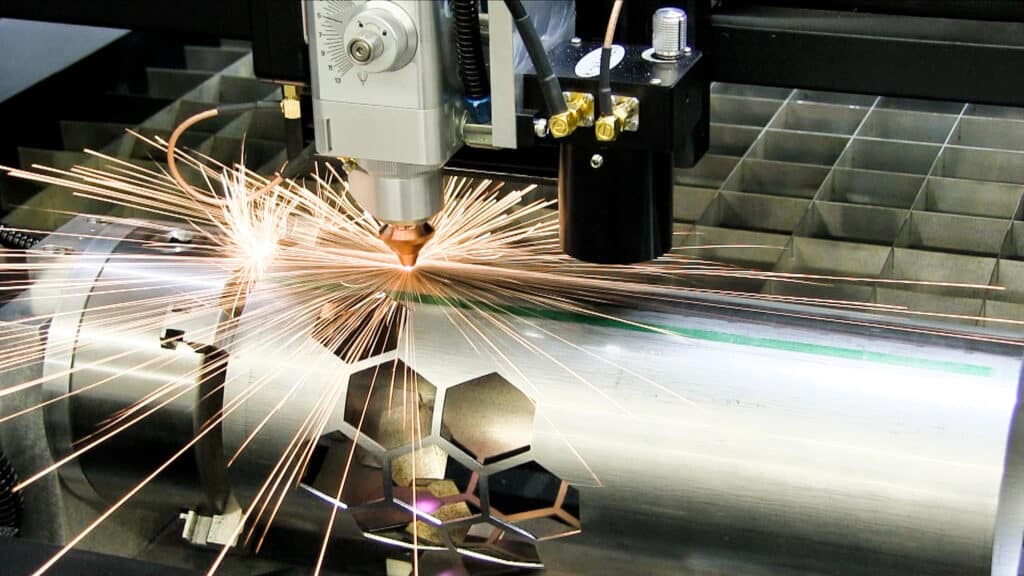 Although the onset of the COVID-19 pandemic in 2020 caused demand for lasers to dip in North America, the previously cited fiber laser market report notes demand was increasing again by the second half of the year, and the North American market is now predicted to account for about 30% of fiber laser market growth by 2027.
Although the onset of the COVID-19 pandemic in 2020 caused demand for lasers to dip in North America, the previously cited fiber laser market report notes demand was increasing again by the second half of the year, and the North American market is now predicted to account for about 30% of fiber laser market growth by 2027.
According to a recent guest editorial in FFJournal, shortages and supply chain challenges can be expected to continue into 2023 and even 2024, although in the U.S., some steps have been taken that could help to soften the impact of these problems, such as the passage of the CHIPS and Science Act, which aims to incentivize manufacture of computer chips and microprocessors in the United States.
Another article in FFJournal notes one response from some manufacturing businesses to supply chain difficulties has been the practice of near-shoring or re-shoring their offshore production work—bringing production back home, or at least closer to home, and mitigating or eliminating layers of logistical complexity. At Kern Laser Systems, we’re also fighting shortage issues. Thankfully, we’ve been able to continue delivering machines within a 6-12 week lead time.
A current piece of sponsored content on The Fabricator’s website advertising an upcoming webcast about on-site nitrogen generation for laser cutting operations illustrates this desire to simplify manufacturing logistics in the laser cutting industry. Generating nitrogen on-site would be an alternative to taking deliveries of nitrogen for these businesses.
What does this all mean for end-users?
As in any year, in 2023 laser cutting operations will continue to upgrade and adjust their shop equipment and work processes in competition with one another, adopting the latest products offered by laser manufacturers. This competition between businesses that use lasers spurs competition between the businesses that make them.
A recent article in The Fabricator provides details of how Indiana metal fabricator Southwest Welding has continually upgraded the laser technology in their shop over time., with modern fiber lasers allowing the shop to cut aluminum faster and with less dross, and increased automation allowing them to operate machines overnight. In the article, employee Lyle Martin notes, “Laser cutting has really exploded the capabilities of what we can do, especially compared to waterjet cutting or stamping.”
Although laser cutting, engraving, and manufacturing technologies have been around for several decades at this point, lasers and laser systems are technologies that remain in constant development, and the advances made by producers of laser technology directly impact the efficiency of the companies and individuals that use these products for their businesses.
Multiple recent briefs in The Fabricator highlight product introductions of high-quality entry-level laser cutting systems and cost-efficient fiber laser cutting systems in the fourth quarter of 2022. We just introduced our own KT300 and KT500 CO2 model lasers, which improve upon and replace our existing KT250 and KT400 models after we made a number of modifications that enabled a higher output power from the lasers.
In an ideal world, product innovation drives up the level of performance a user can get out of a lower-priced product, and it also simultaneously drives down the price of admission for professional quality equipment; however, in our real world, of course, there are more complex forces at play, and laser equipment customers may continue to feel the impact of 2022’s high inflation in laser prices.
In addition, even as inflation starts to ease, prices of equipment could remain high. If more laser manufacturing companies and even manufacturers in adjacent businesses do bring production home to the United States, this could result in more high-quality laser products hitting the market, which is good for the consumer, but manufacturing in the U.S. also tends to result in higher prices in addition to higher quality. That’s why we commit ourselves not only to building the highest quality lasers we can, but also to selling them for the best prices we can—and that commitment remains evergreen at Kern, no matter what year it is.
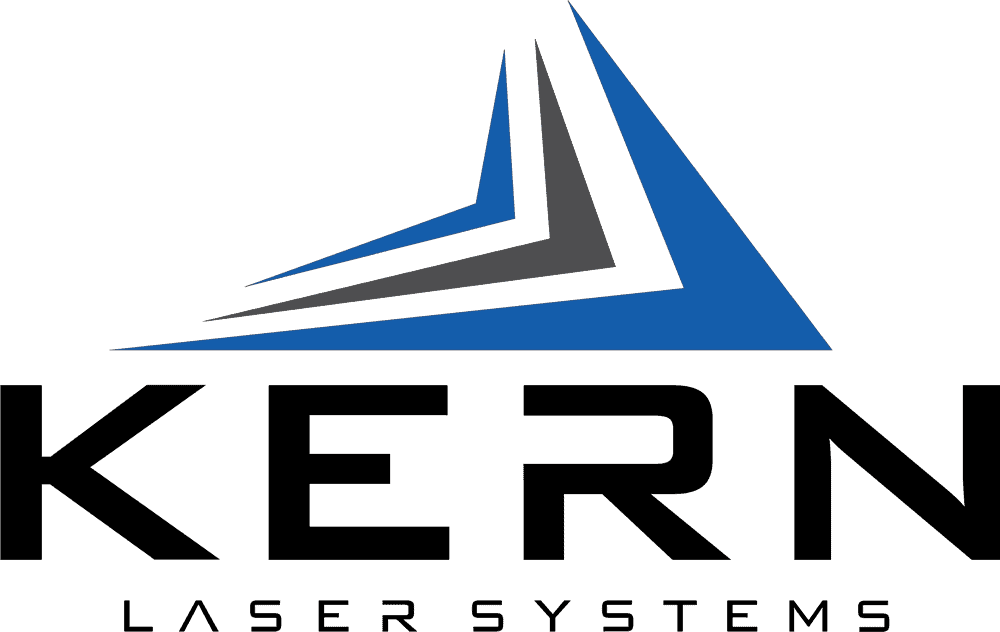
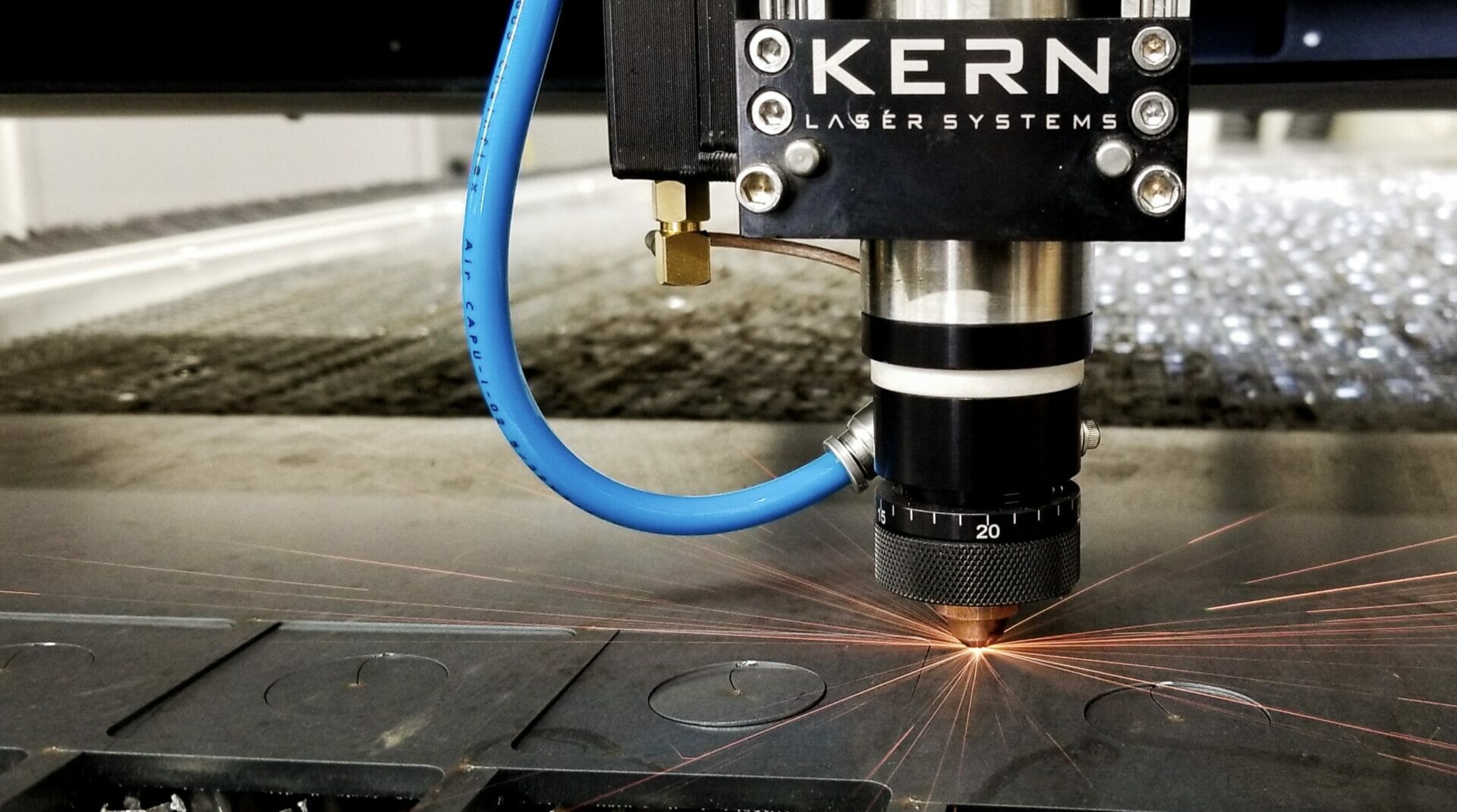
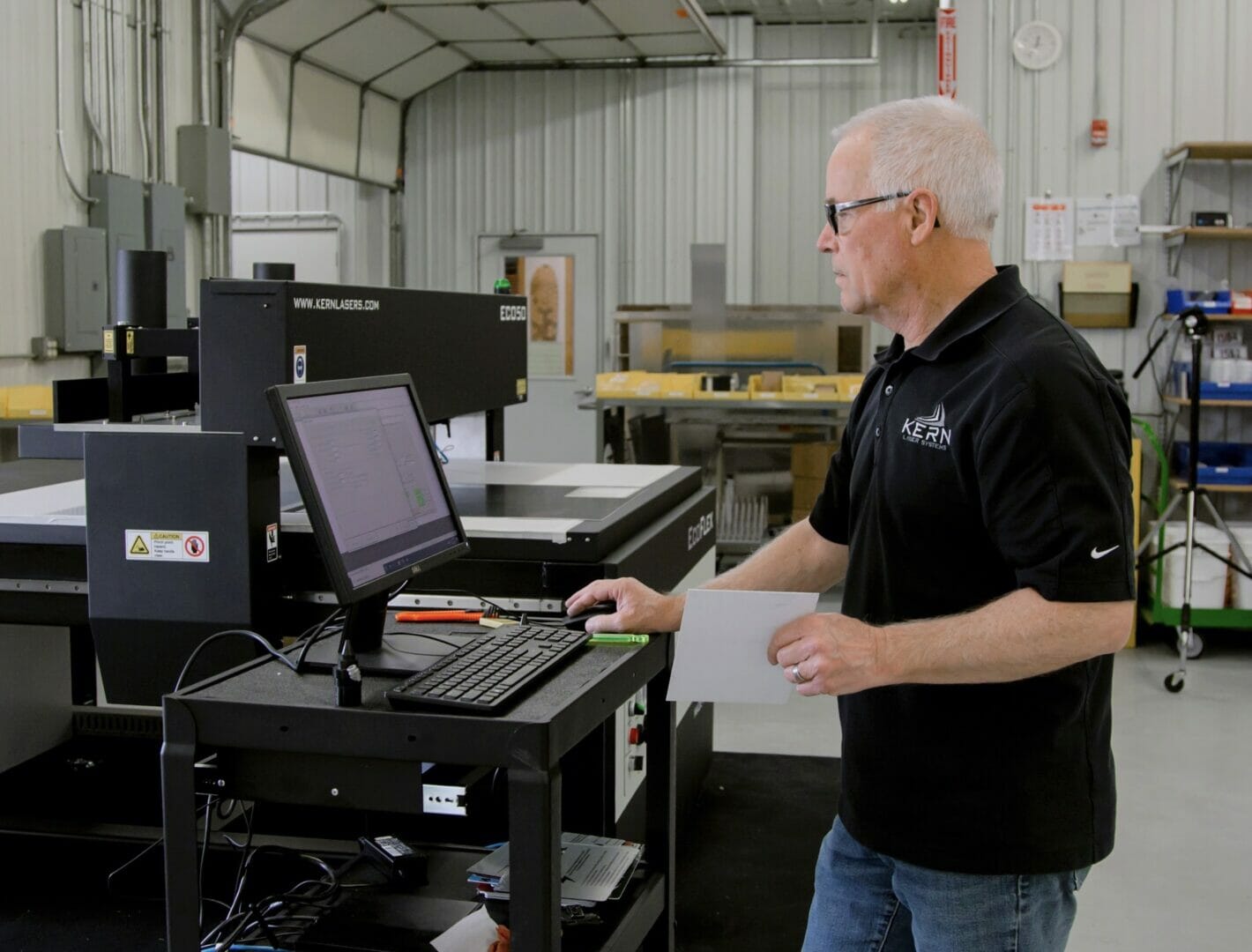
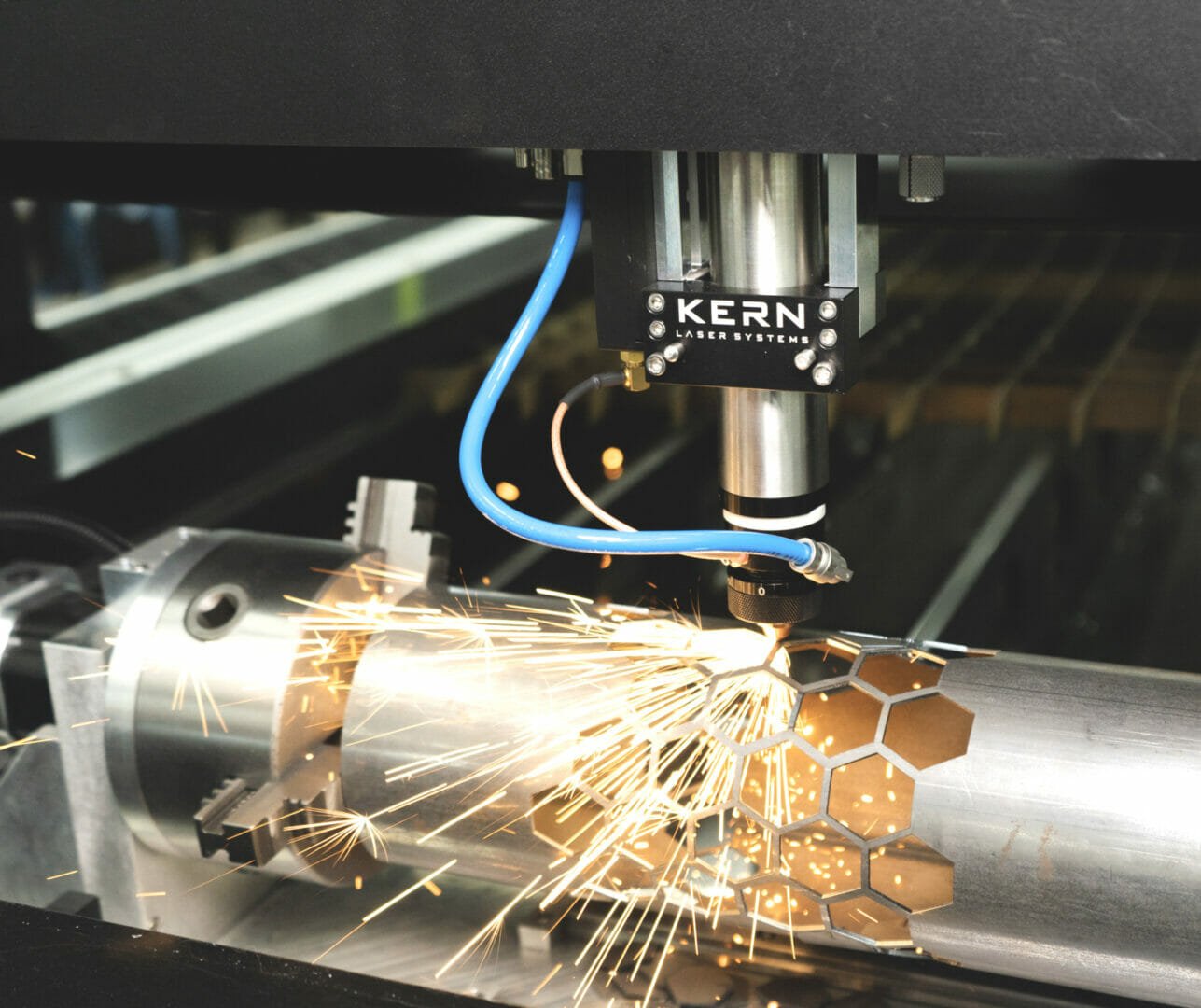
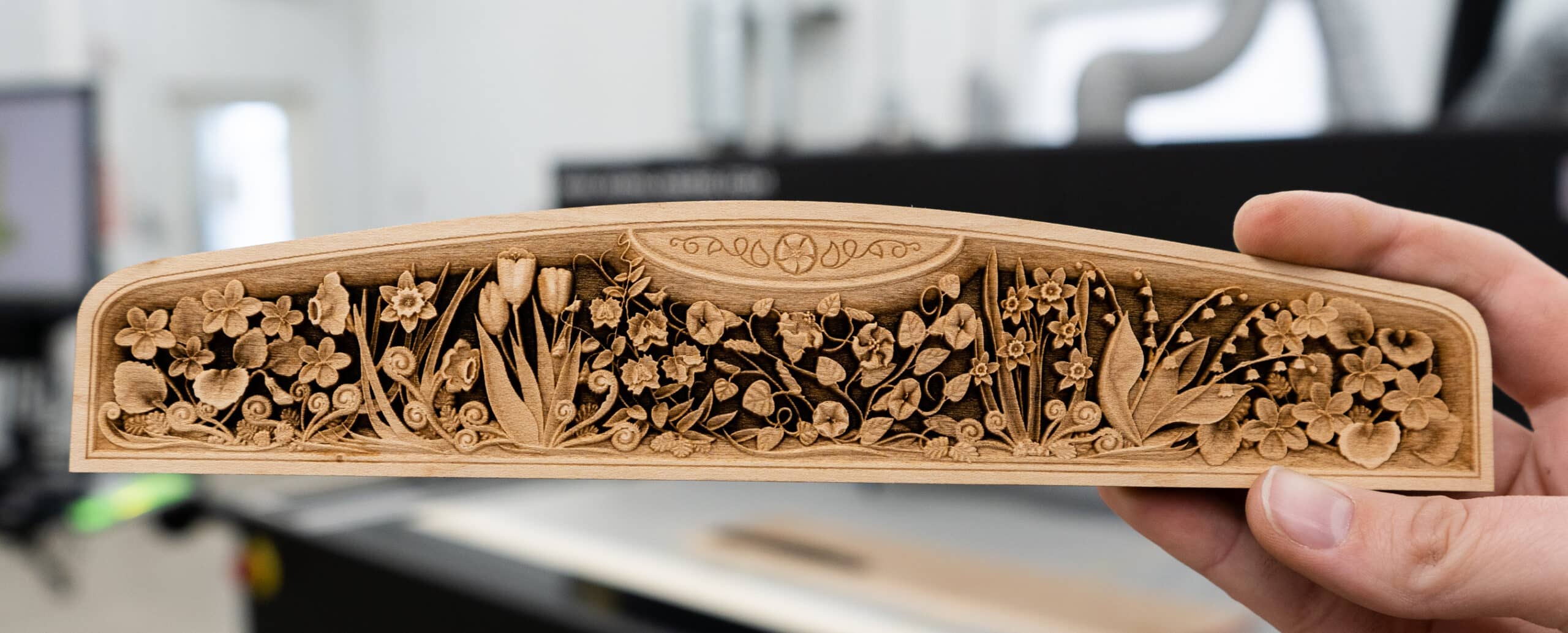

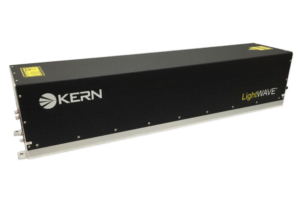
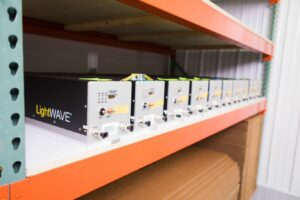 Due to this fact, Kern has put together the most effective advance replacement program in the industry. Instead of repairing the laser onsite or requiring the defective laser to be returned for repair, Kern simply sends a replacement laser to the customer upfront. This allows the customer to have their laser system back up and running as quickly as possible. Once the laser is swapped out the customer simply places the defective laser in its box and it is returned to Kern.
Due to this fact, Kern has put together the most effective advance replacement program in the industry. Instead of repairing the laser onsite or requiring the defective laser to be returned for repair, Kern simply sends a replacement laser to the customer upfront. This allows the customer to have their laser system back up and running as quickly as possible. Once the laser is swapped out the customer simply places the defective laser in its box and it is returned to Kern.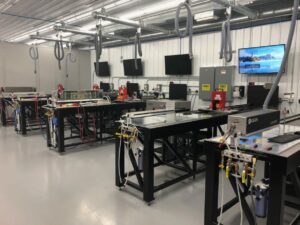 Periodically, failure reviews are performed to determine if product or process improvements can be implemented. The goal being to eliminate problems and ultimately decrease the failure rate of each laser model. The process works and Kern’s failure rates are dropping year after year. In essence, the more lasers we manufacture, the more reliable they will become.
Periodically, failure reviews are performed to determine if product or process improvements can be implemented. The goal being to eliminate problems and ultimately decrease the failure rate of each laser model. The process works and Kern’s failure rates are dropping year after year. In essence, the more lasers we manufacture, the more reliable they will become.
